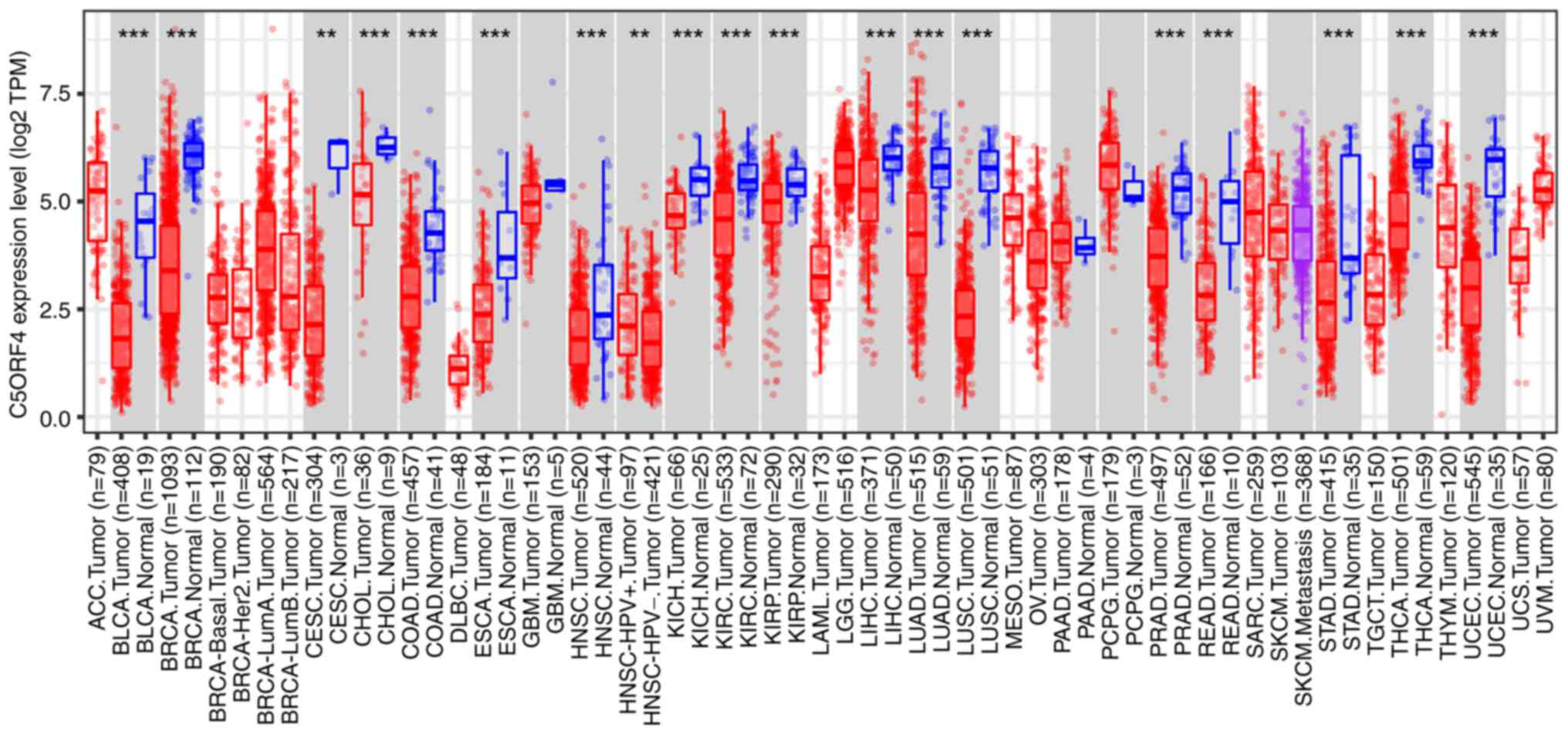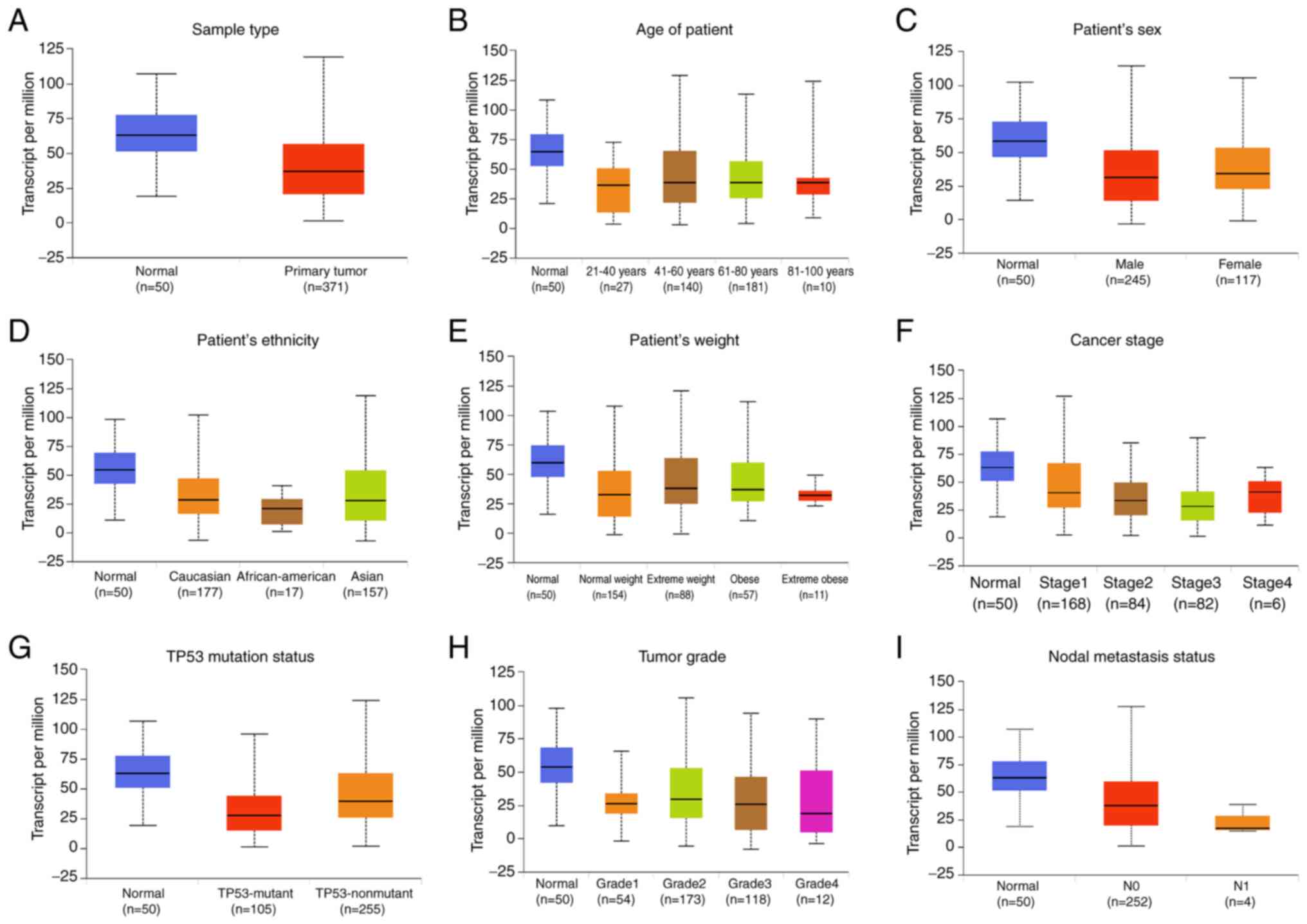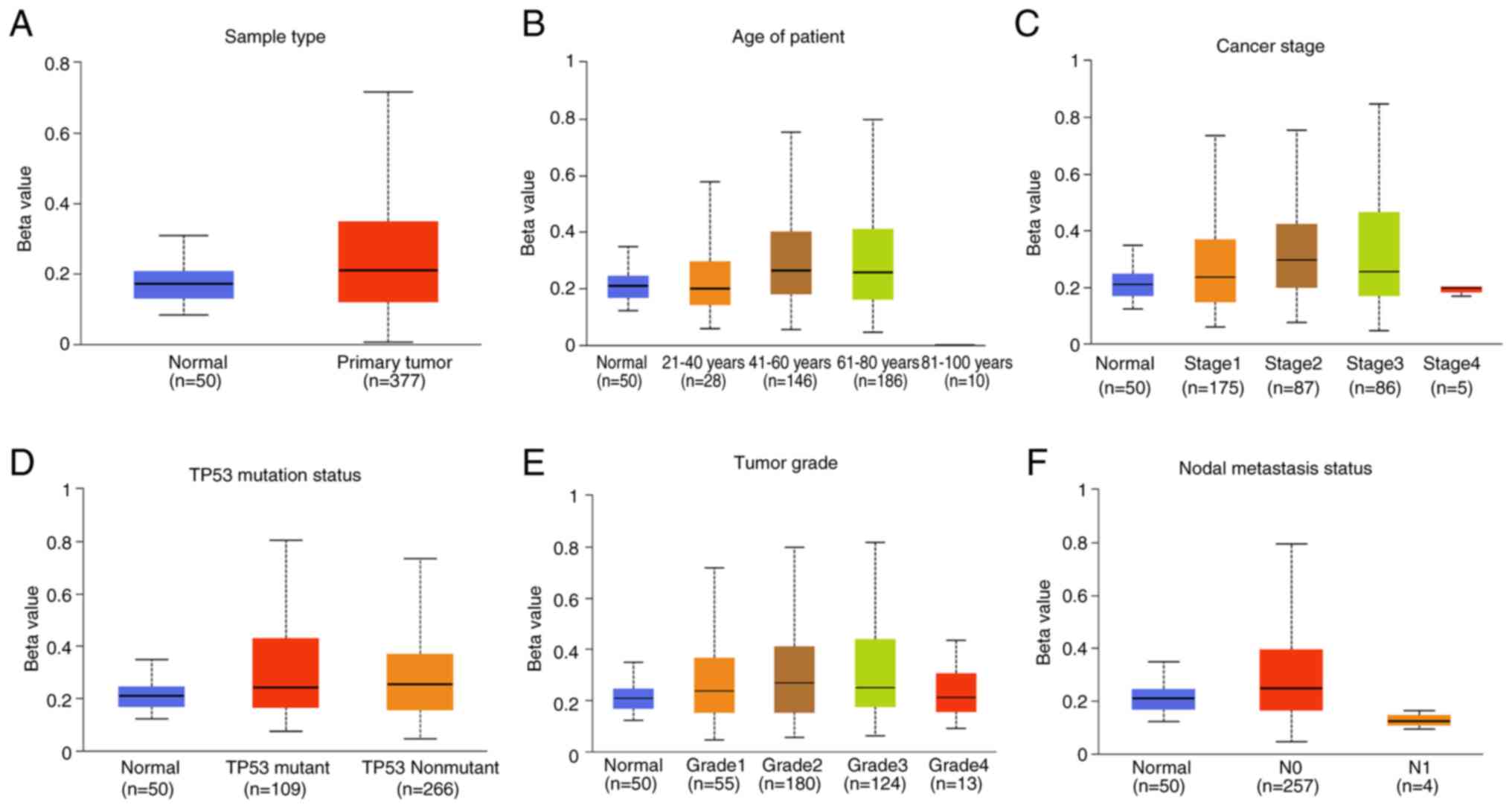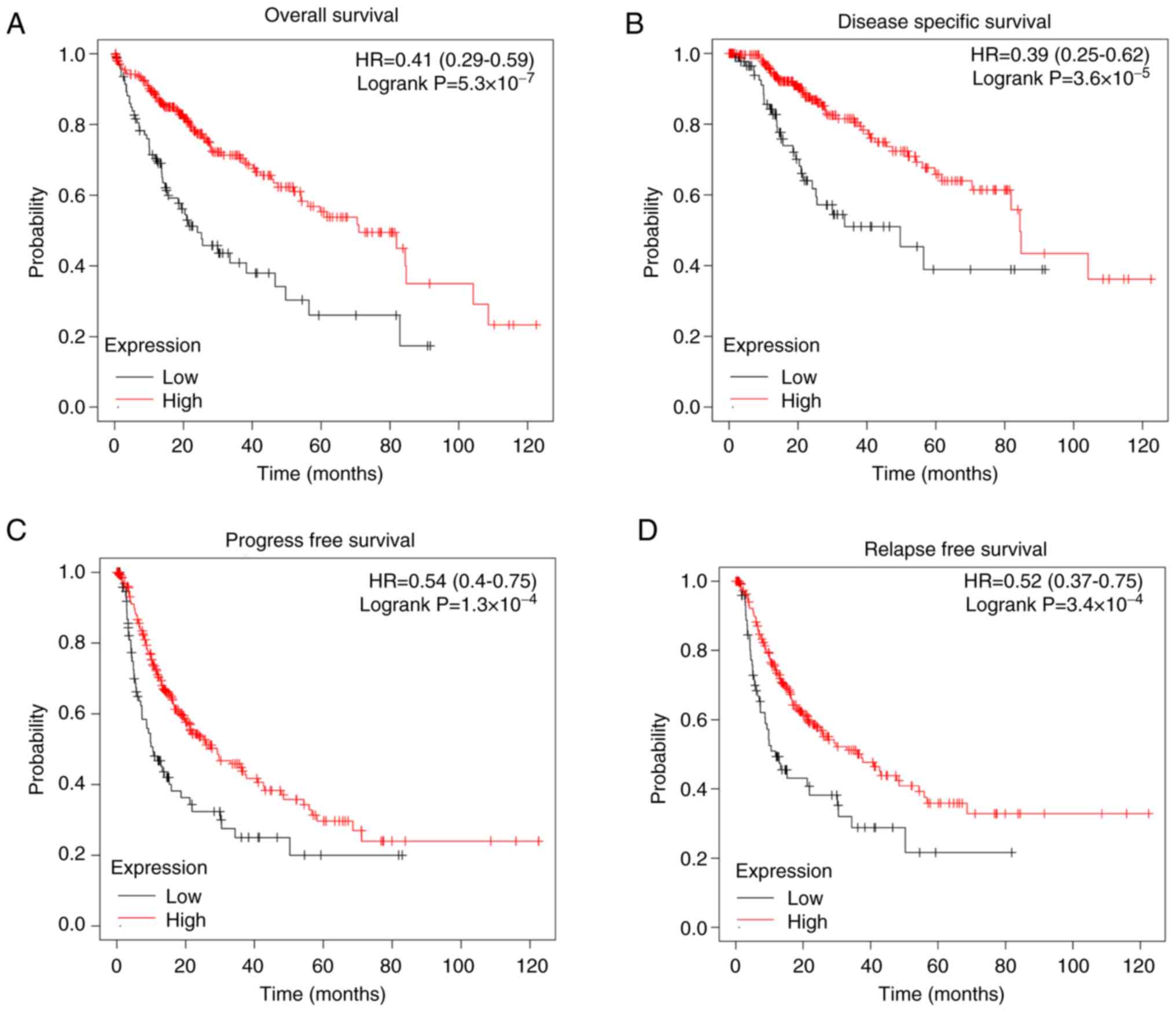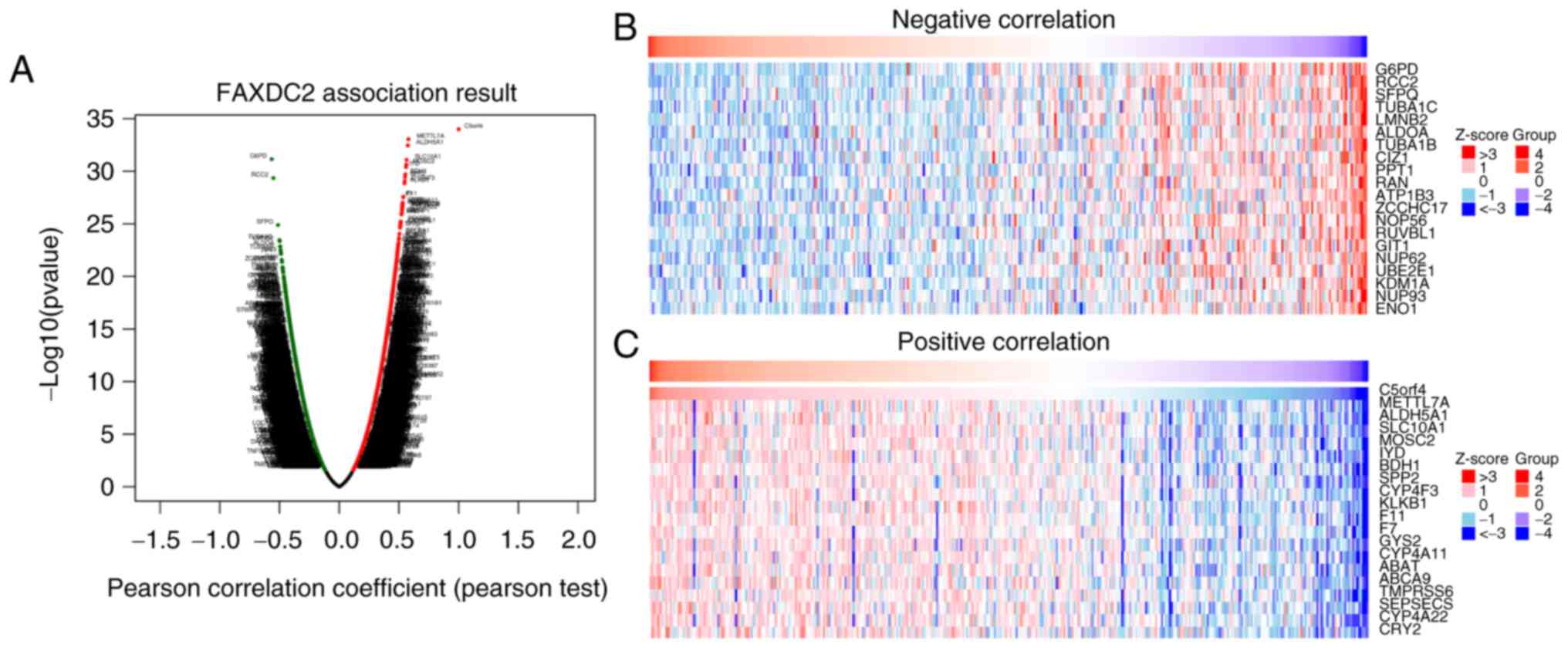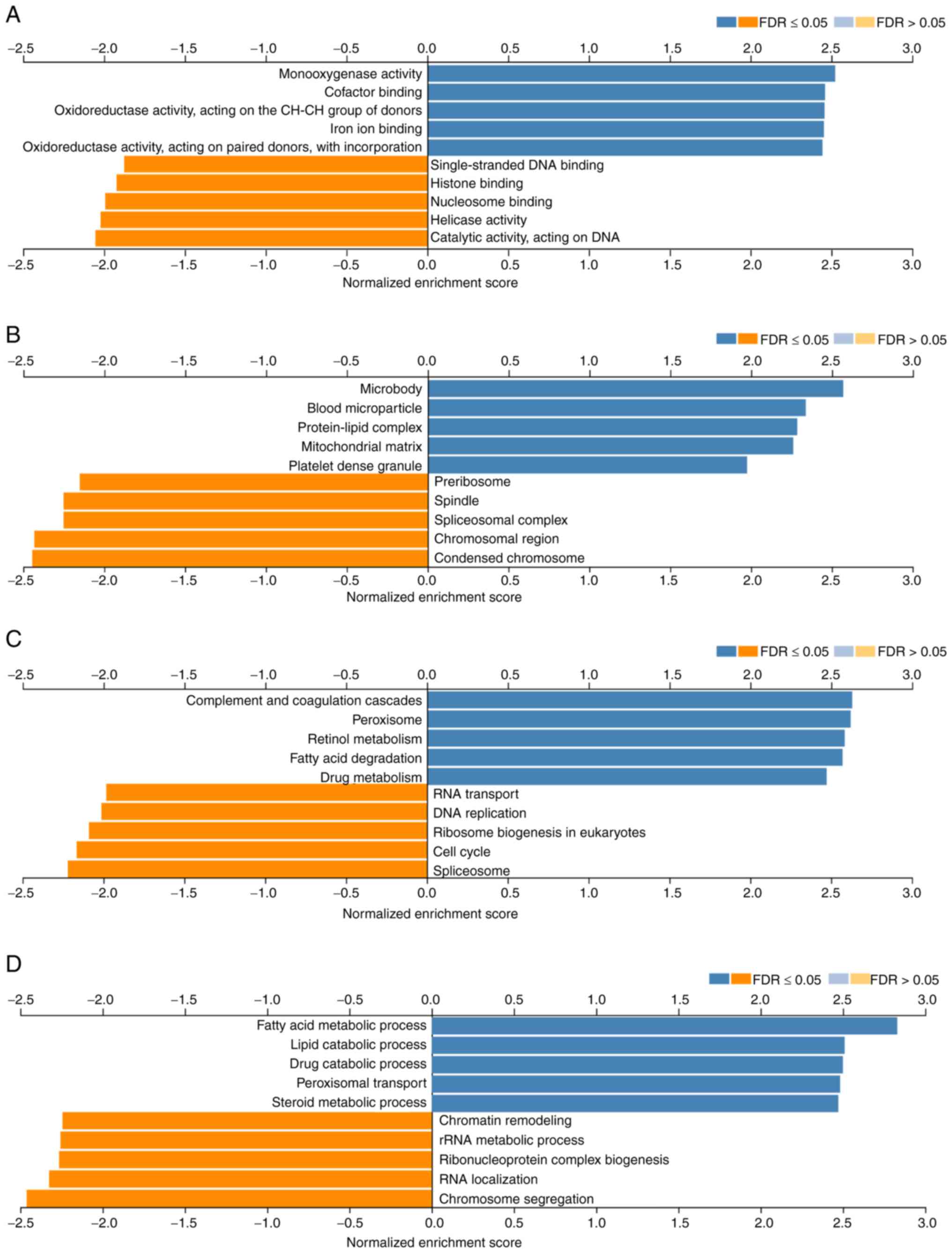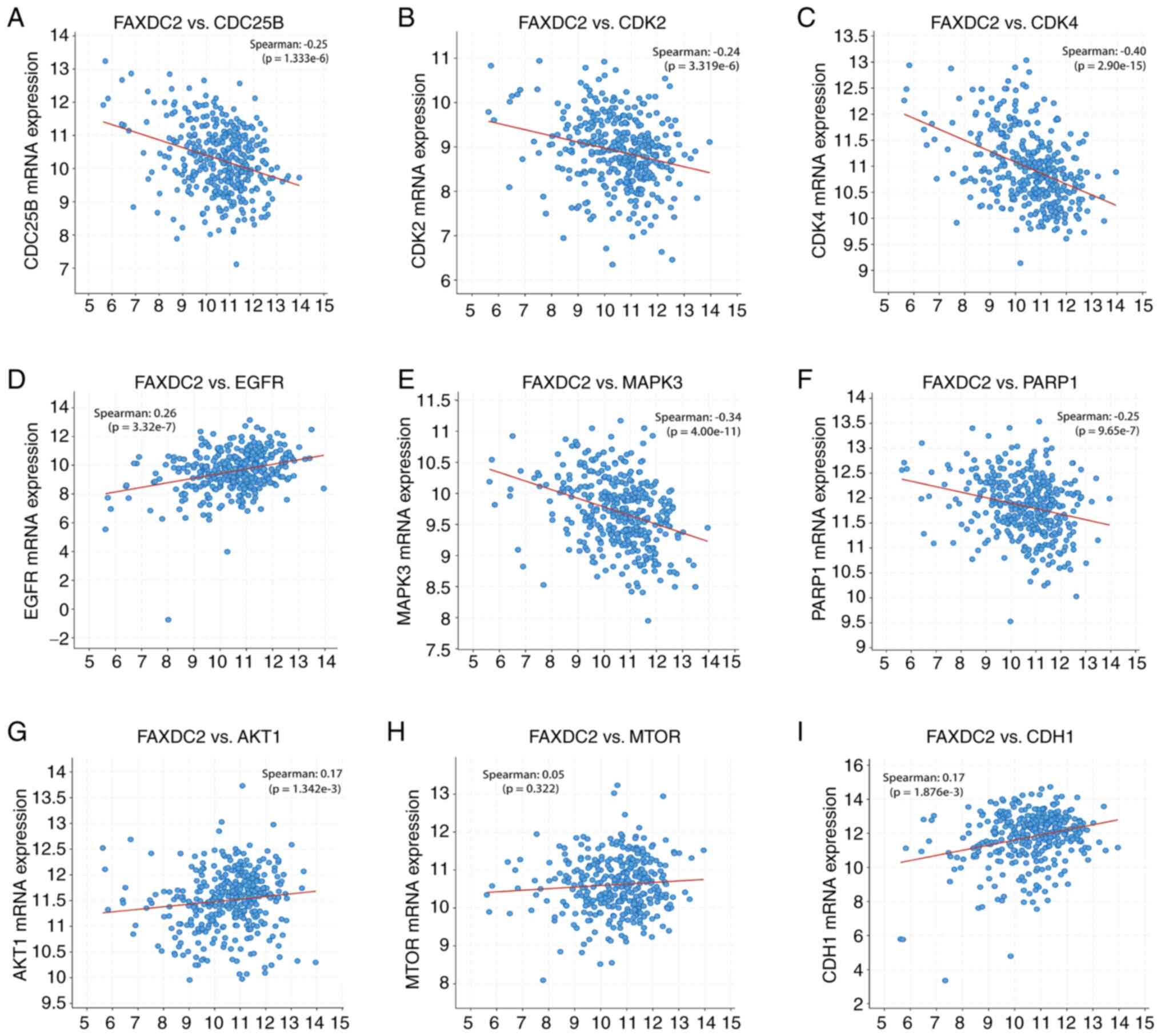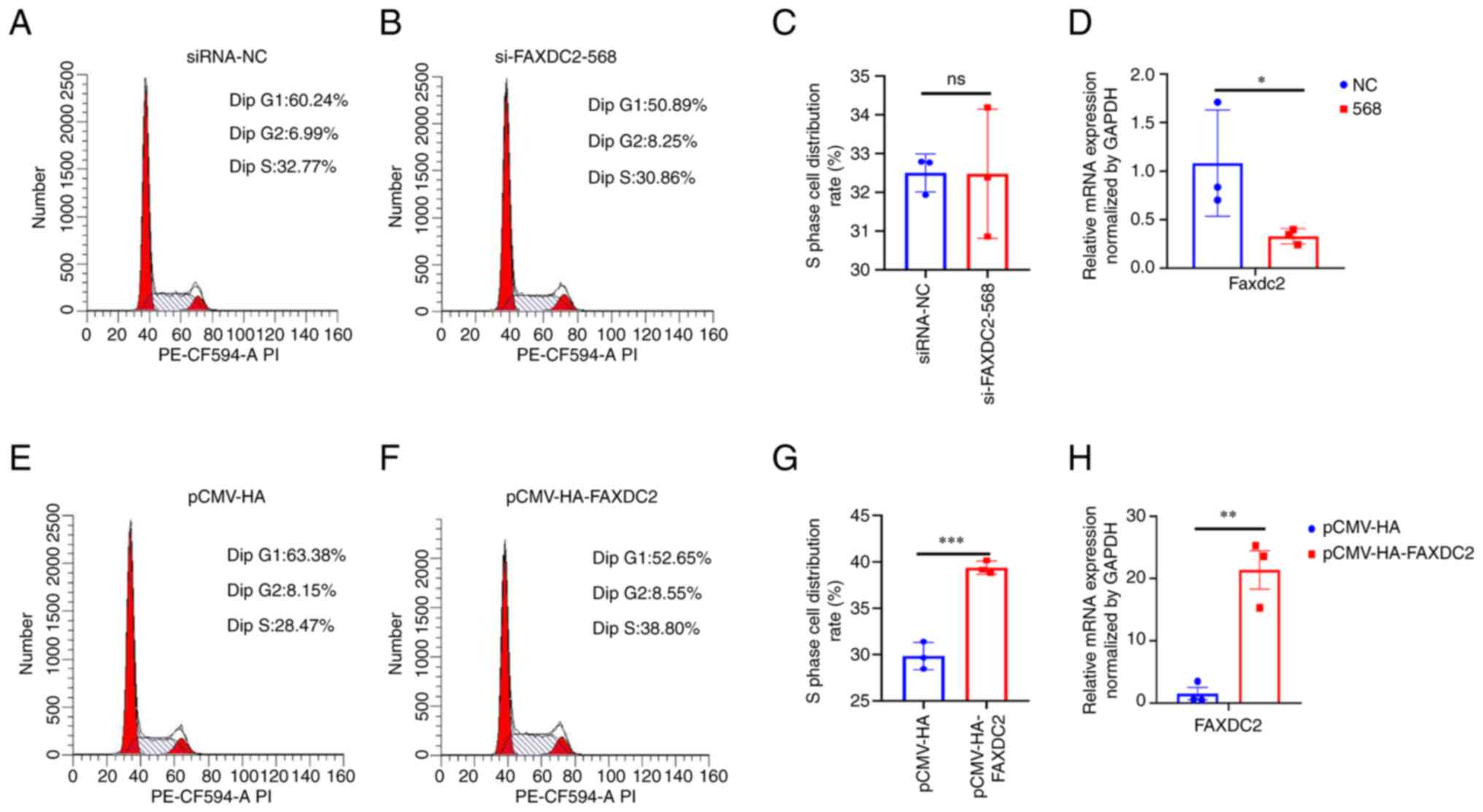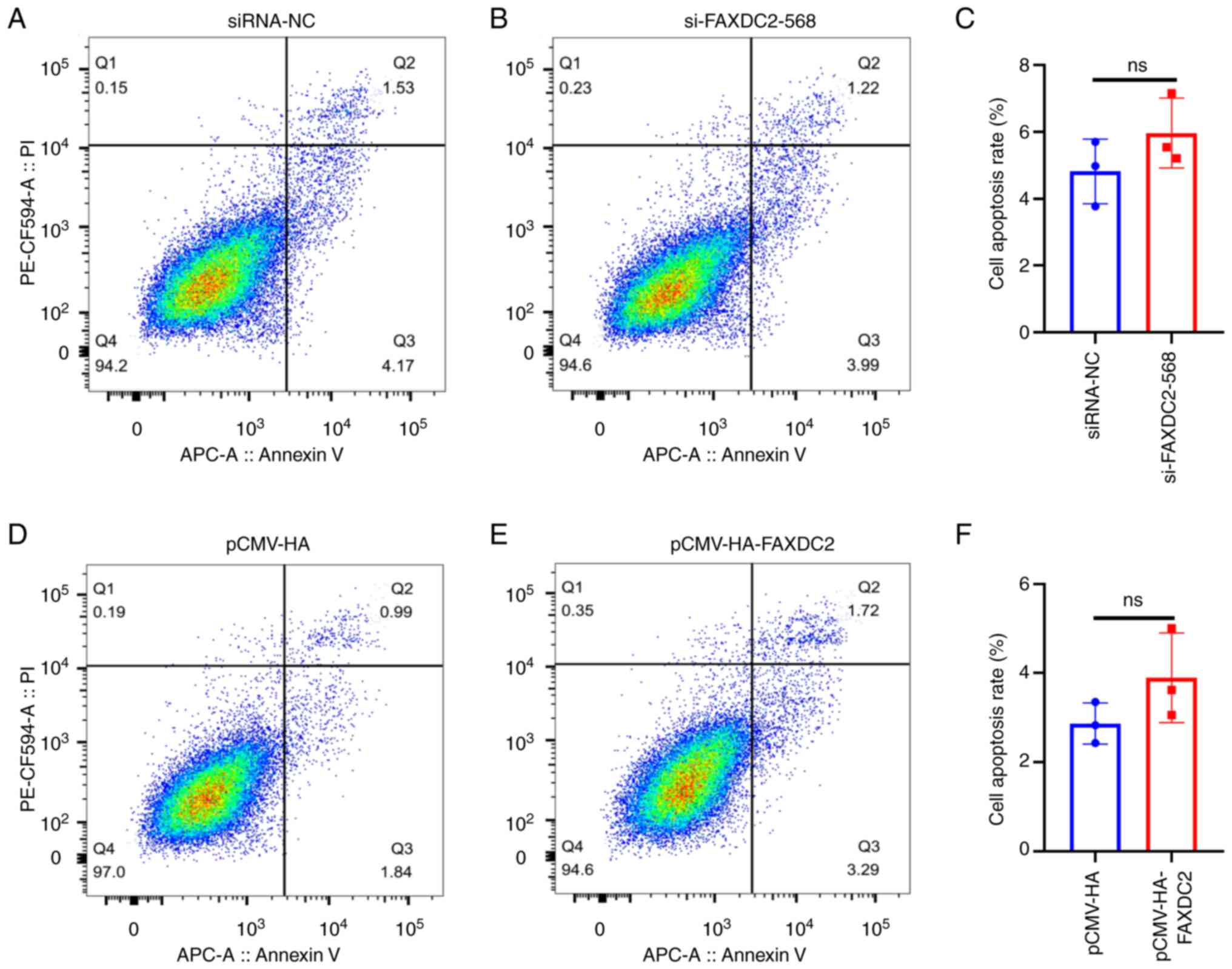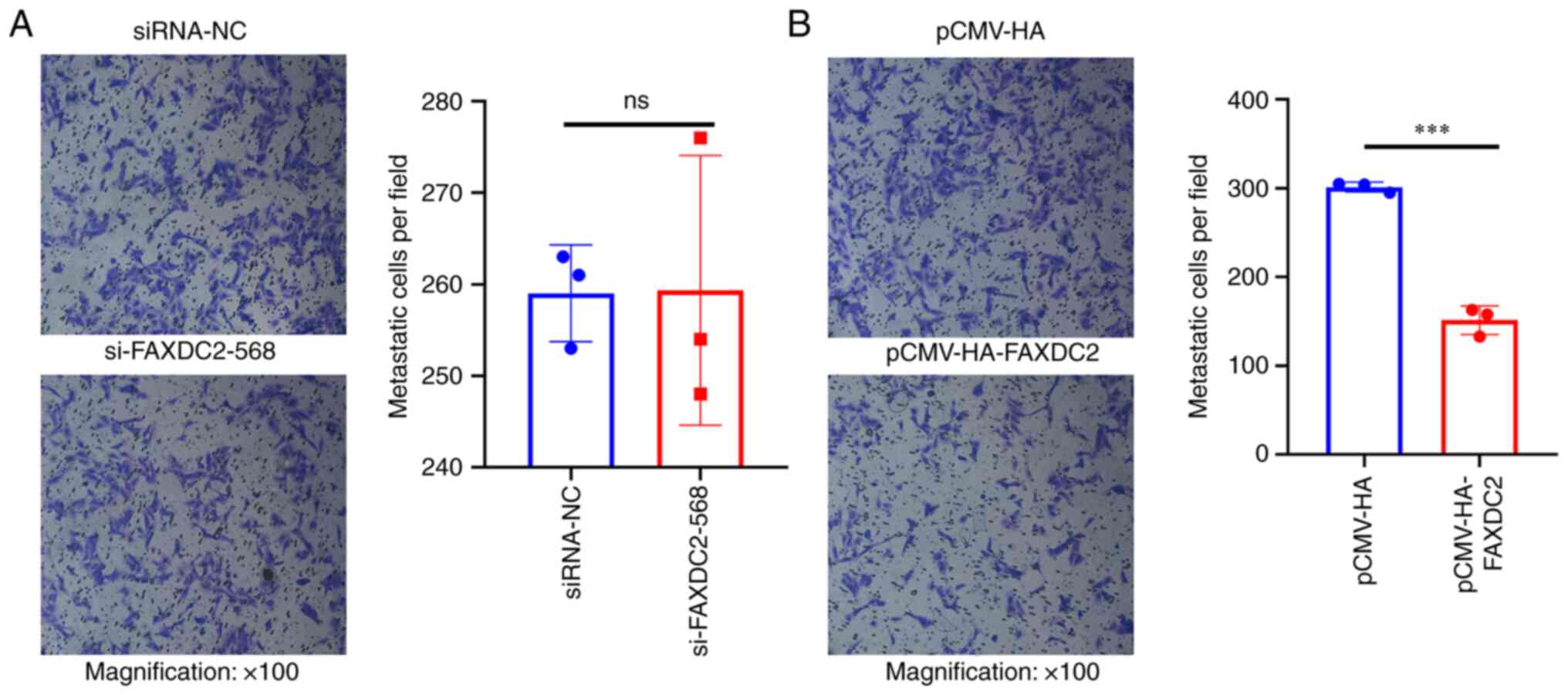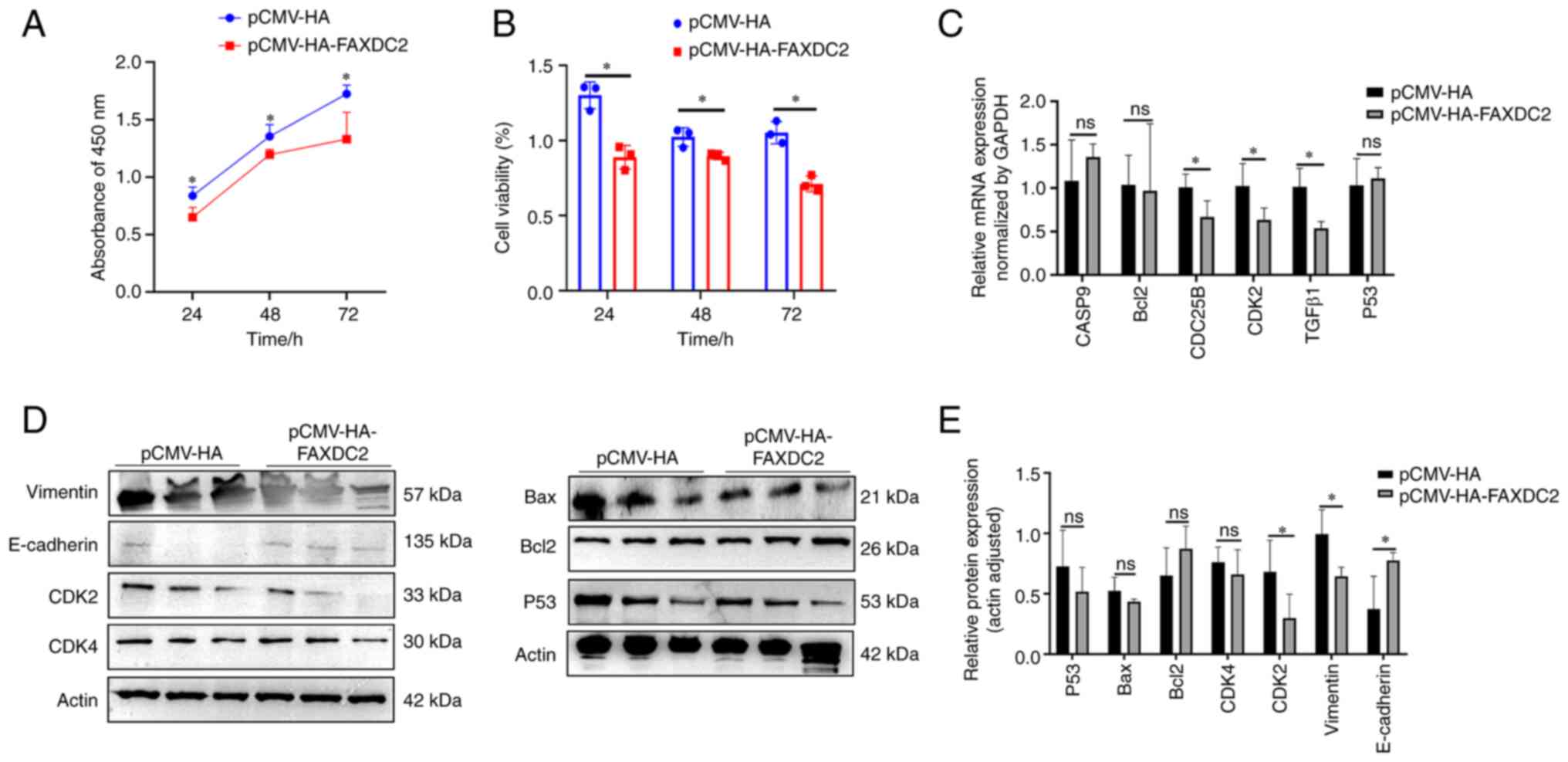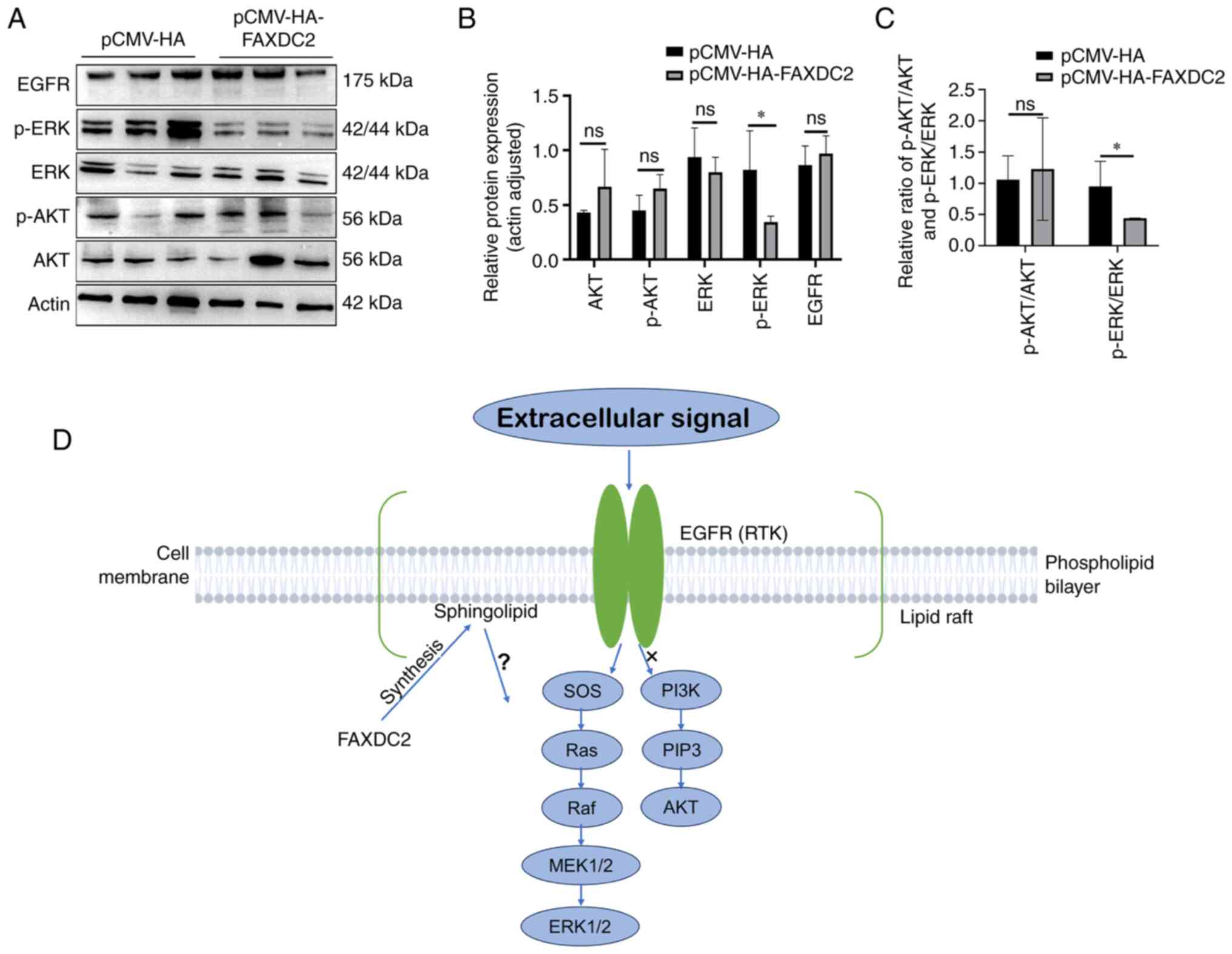|
1
|
Siegel RL, Miller KD, Wagle NS and Jemal
A: Cancer statistics, 2023. CA Cancer J Clin. 73:17–48.
2023.PubMed/NCBI View Article : Google Scholar
|
|
2
|
Torre LA, Bray F, Siegel RL, Ferlay J,
Lortet-Tieulent J and Jemal A: Global cancer statistics, 2012. CA
Cancer J Clin. 65:87–108. 2015.PubMed/NCBI View Article : Google Scholar
|
|
3
|
Vogel A, Meyer T, Sapisochin G, Salem R
and Saborowski A: Hepatocellular carcinoma. Lancet. 400:1345–1362.
2022.PubMed/NCBI View Article : Google Scholar
|
|
4
|
Chidambaranathan-Reghupaty S, Fisher PB
and Sarkar D: Hepatocellular carcinoma (HCC): Epidemiology,
etiology and molecular classification. Adv Cancer Res. 149:1–61.
2021.PubMed/NCBI View Article : Google Scholar
|
|
5
|
Siegel RL, Miller KD, Fuchs HE and Jemal
A: Cancer statistics, 2022. CA Cancer J Clin. 72:7–33.
2022.PubMed/NCBI View Article : Google Scholar
|
|
6
|
Podlasek A, Abdulla M, Broering D and
Bzeizi K: Recent advances in locoregional therapy of hepatocellular
carcinoma. Cancers (Basel). 15(3347)2023.PubMed/NCBI View Article : Google Scholar
|
|
7
|
Whittaker S, Marais R and Zhu AX: The role
of signaling pathways in the development and treatment of
hepatocellular carcinoma. Oncogene. 29:4989–5005. 2010.PubMed/NCBI View Article : Google Scholar
|
|
8
|
Xiang T, Fei R, Wang Z, Shen Z, Qian J and
Chen W: Nicotine enhances invasion and metastasis of human
colorectal cancer cells through the nicotinic acetylcholine
receptor downstream p38 MAPK signaling pathway. Oncol Rep.
35:205–210. 2016.PubMed/NCBI View Article : Google Scholar
|
|
9
|
Xu CY, Qin MB, Tan L, Liu SQ and Huang JA:
NIBP impacts on the expression of E-cadherin, CD44 and vimentin in
colon cancer via the NF-κB pathway. Mol Med Rep. 13:5379–5385.
2016.PubMed/NCBI View Article : Google Scholar
|
|
10
|
Sun Y, Liu WZ, Liu T, Feng X, Yang N and
Zhou HF: Signaling pathway of MAPK/ERK in cell proliferation,
differentiation, migration, senescence and apoptosis. J Recept
Signal Transduct Res. 35:600–604. 2015.PubMed/NCBI View Article : Google Scholar
|
|
11
|
Reddy KB, Nabha SM and Atanaskova N: Role
of MAP kinase in tumor progression and invasion. Cancer Metastasis
Rev. 22:395–403. 2003.PubMed/NCBI View Article : Google Scholar
|
|
12
|
Llovet JM, Villanueva A, Lachenmayer A and
Finn RS: Advances in targeted therapies for hepatocellular
carcinoma in the genomic era. Nat Rev Clin Oncol. 12:408–424.
2015.PubMed/NCBI View Article : Google Scholar
|
|
13
|
Wiesenauer CA, Yip-Schneider MT, Wang Y
and Schmidt CM: Multiple anticancer effects of blocking MEK-ERK
signaling in hepatocellular carcinoma. J Am Coll Surg. 198:410–421.
2004.PubMed/NCBI View Article : Google Scholar
|
|
14
|
Cheng C, Geng F, Cheng X and Guo D: Lipid
metabolism reprogramming and its potential targets in cancer.
Cancer Commun (Lond). 38(27)2018.PubMed/NCBI View Article : Google Scholar
|
|
15
|
Yang H, Deng Q, Ni T, Liu Y, Lu L, Dai H,
Wang H and Yang W: Targeted inhibition of LPL/FABP4/CPT1 fatty acid
metabolic axis can effectively prevent the progression of
nonalcoholic steatohepatitis to liver cancer. Int J Biol Sci.
17:4207–4222. 2021.PubMed/NCBI View Article : Google Scholar
|
|
16
|
Wu D, Yang Y, Hou Y, Zhao Z, Liang N, Yuan
P, Yang T, Xing J and Li J: Increased mitochondrial fission drives
the reprogramming of fatty acid metabolism in hepatocellular
carcinoma cells through suppression of Sirtuin 1. Cancer Commun
(Lond). 42:37–55. 2022.PubMed/NCBI View Article : Google Scholar
|
|
17
|
Wang W, Bai L, Li W and Cui J: The lipid
metabolic landscape of cancers and new therapeutic perspectives.
Front Oncol. 10(605154)2020.PubMed/NCBI View Article : Google Scholar
|
|
18
|
Beloribi-Djefaflia S, Vasseur S and
Guillaumond F: Lipid metabolic reprogramming in cancer cells.
Oncogenesis. 5(e189)2016.PubMed/NCBI View Article : Google Scholar
|
|
19
|
Du D, Liu C, Qin M, Zhang X, Xi T, Yuan S,
Hao H and Xiong J: Metabolic dysregulation and emerging
therapeutical targets for hepatocellular carcinoma. Acta Pharm Sin
B. 12:558–580. 2022.PubMed/NCBI View Article : Google Scholar
|
|
20
|
Alderson NL, Rembiesa BM, Walla MD,
Bielawska A, Bielawski J and Hama H: The human FA2H gene encodes a
fatty acid 2-hydroxylase. J Biol Chem. 279:48562–48568.
2004.PubMed/NCBI View Article : Google Scholar
|
|
21
|
Guo L, Zhang X, Zhou D, Okunade AL and Su
X: Stereospecificity of fatty acid 2-hydroxylase and differential
functions of 2-hydroxy fatty acid enantiomers. J Lipid Res.
53:1327–1335. 2012.PubMed/NCBI View Article : Google Scholar
|
|
22
|
Xue J, Yu Y, Zhang X, Zhang C, Zhao Y, Liu
B, Zhang L, Wang L, Chen R, Gao X, et al: Sphingomyelin synthase 2
inhibition ameliorates cerebral ischemic reperfusion injury through
reducing the recruitment of toll-like receptor 4 to lipid rafts. J
Am Heart Assoc. 8(e012885)2019.PubMed/NCBI View Article : Google Scholar
|
|
23
|
Chen S, He H, Yang H, Tan B, Liu E, Zhao X
and Zhao Y: The role of lipid rafts in cell entry of human
metapneumovirus. J Med Virol. 91:949–957. 2019.PubMed/NCBI View Article : Google Scholar
|
|
24
|
Peng Y, Song Y and Wang H: Systematic
elucidation of the aneuploidy landscape and identification of
aneuploidy driver genes in prostate cancer. Front Cell Dev Biol.
9(723466)2021.PubMed/NCBI View Article : Google Scholar
|
|
25
|
Zhang P, Ma K, Ke X, Liu L, Li Y, Liu Y
and Wang Y: Development and validation of a five-RNA-based
signature and identification of candidate drugs for neuroblastoma.
Front Genet. 12(685646)2021.PubMed/NCBI View Article : Google Scholar
|
|
26
|
Jin Q, Ren Y, Wang M, Suraneni PK, Li D,
Crispino JD, Fan J and Huang Z: Novel function of FAXDC2 in
megakaryopoiesis. Blood Cancer J. 6(e478)2016.PubMed/NCBI View Article : Google Scholar
|
|
27
|
Liu H, Wilson KR, Firth AM, Macri C,
Schriek P, Blum AB, Villar J, Wormald S, Shambrook M, Xu B, et al:
Ubiquitin-like protein 3 (UBL3) is required for MARCH
ubiquitination of major histocompatibility complex class II and
CD86. Nat Commun. 13(1934)2022.PubMed/NCBI View Article : Google Scholar
|
|
28
|
Gu Z, Eils R and Schlesner M: Complex
heatmaps reveal patterns and correlations in multidimensional
genomic data. Bioinformatics (Oxford, England). 32:2847–2849.
2016.PubMed/NCBI View Article : Google Scholar
|
|
29
|
Huynh H, Nguyen TT, Chow KH, Tan PH, Soo
KC and Tran E: Over-expression of the mitogen-activated protein
kinase (MAPK) kinase (MEK)-MAPK in hepatocellular carcinoma: Its
role in tumor progression and apoptosis. BMC Gastroenterol.
3(19)2003.PubMed/NCBI View Article : Google Scholar
|
|
30
|
Wu Y, Zhang Y, Qin X, Geng H, Zuo D and
Zhao Q: PI3K/AKT/mTOR pathway-related long non-coding RNAs: Roles
and mechanisms in hepatocellular carcinoma. Pharmacol Res.
160(105195)2020.PubMed/NCBI View Article : Google Scholar
|
|
31
|
Shen L, Tian SJ, Song HL, Chen X, Guo H,
Wan D, Wang YR, Wang FW and Liu LJ: Cytotoxic tricycloalternarene
compounds from endophyte alternaria sp. W-1 associated with
laminaria japonica. Mar Drugs. 16(402)2018.PubMed/NCBI View Article : Google Scholar
|
|
32
|
Chow AK, Ng L, Sing Li H, Cheng CW, Lam
CS, Yau TC, Cheng PN, Fan ST, Poon RT and Pang RW: Anti-tumor
efficacy of a recombinant human arginase in human hepatocellular
carcinoma. Curr Cancer Drug Targets. 12:1233–1243. 2012.PubMed/NCBI View Article : Google Scholar
|
|
33
|
Takkunen M, Grenman R, Hukkanen M,
Korhonen M, García de Herreros A and Virtanen I: Snail-dependent
and -independent epithelial-mesenchymal transition in oral squamous
carcinoma cells. J Histochem Cytochem. 54:1263–1275.
2006.PubMed/NCBI View Article : Google Scholar
|
|
34
|
de Araujo VC, Pinto Júnior DS, de Sousa
SO, Nunes FD and de Araujo NS: Vimentin in oral squamous cell
carcinoma. Eur Arch Otorhinolaryngol. 250:105–109. 1993.PubMed/NCBI View Article : Google Scholar
|
|
35
|
Satelli A and Li S: Vimentin in cancer and
its potential as a molecular target for cancer therapy. Cell Mol
Life Sci. 68:3033–3046. 2011.PubMed/NCBI View Article : Google Scholar
|
|
36
|
Hama H: Fatty acid 2-Hydroxylation in
mammalian sphingolipid biology. Biochim Biophys Acta. 1801:405–414.
2010.PubMed/NCBI View Article : Google Scholar
|
|
37
|
Sun L, Yang X, Huang X, Yao Y, Wei X, Yang
S, Zhou D, Zhang W, Long Z, Xu X, et al: 2-Hydroxylation of fatty
acids represses colorectal tumorigenesis and metastasis via the YAP
transcriptional axis. Cancer Res. 81:289–302. 2021.PubMed/NCBI View Article : Google Scholar
|
|
38
|
Webb DJ, Nguyen DH and Gonias SL:
Extracellular signal-regulated kinase functions in the urokinase
receptor-dependent pathway by which neutralization of low density
lipoprotein receptor-related protein promotes fibrosarcoma cell
migration and matrigel invasion. J Cell Sci. 113:123–134.
2000.PubMed/NCBI View Article : Google Scholar
|
|
39
|
Chen L, Guo P, He Y, Chen Z, Chen L, Luo
Y, Qi L, Liu Y, Wu Q, Cui Y, et al: HCC-derived exosomes elicit HCC
progression and recurrence by epithelial-mesenchymal transition
through MAPK/ERK signalling pathway. Cell Death Dis.
9(513)2018.PubMed/NCBI View Article : Google Scholar
|
|
40
|
Yang M, Yu X, Li X, Luo B, Yang W, Lin Y,
Li D, Gan Z, Xu J and He T: TNFAIP3 is required for FGFR1
activation-promoted proliferation and tumorigenesis of premalignant
DCIS.COM human mammary epithelial cells. Breast Cancer Res.
20(97)2018.PubMed/NCBI View Article : Google Scholar
|
|
41
|
Wang K, Ji W, Yu Y, Li Z, Niu X, Xia W and
Lu S: FGFR1-ERK1/2-SOX2 axis promotes cell proliferation,
epithelial-mesenchymal transition, and metastasis in
FGFR1-amplified lung cancer. Oncogene. 37:5340–5354.
2018.PubMed/NCBI View Article : Google Scholar
|
|
42
|
Zhang G, Li X, Chen Q, Li J, Ruan Q, Chen
YH, Yang X and Wan X: CD317 activates EGFR by regulating its
association with lipid rafts. Cancer Res. 79:2220–2231.
2019.PubMed/NCBI View Article : Google Scholar
|



